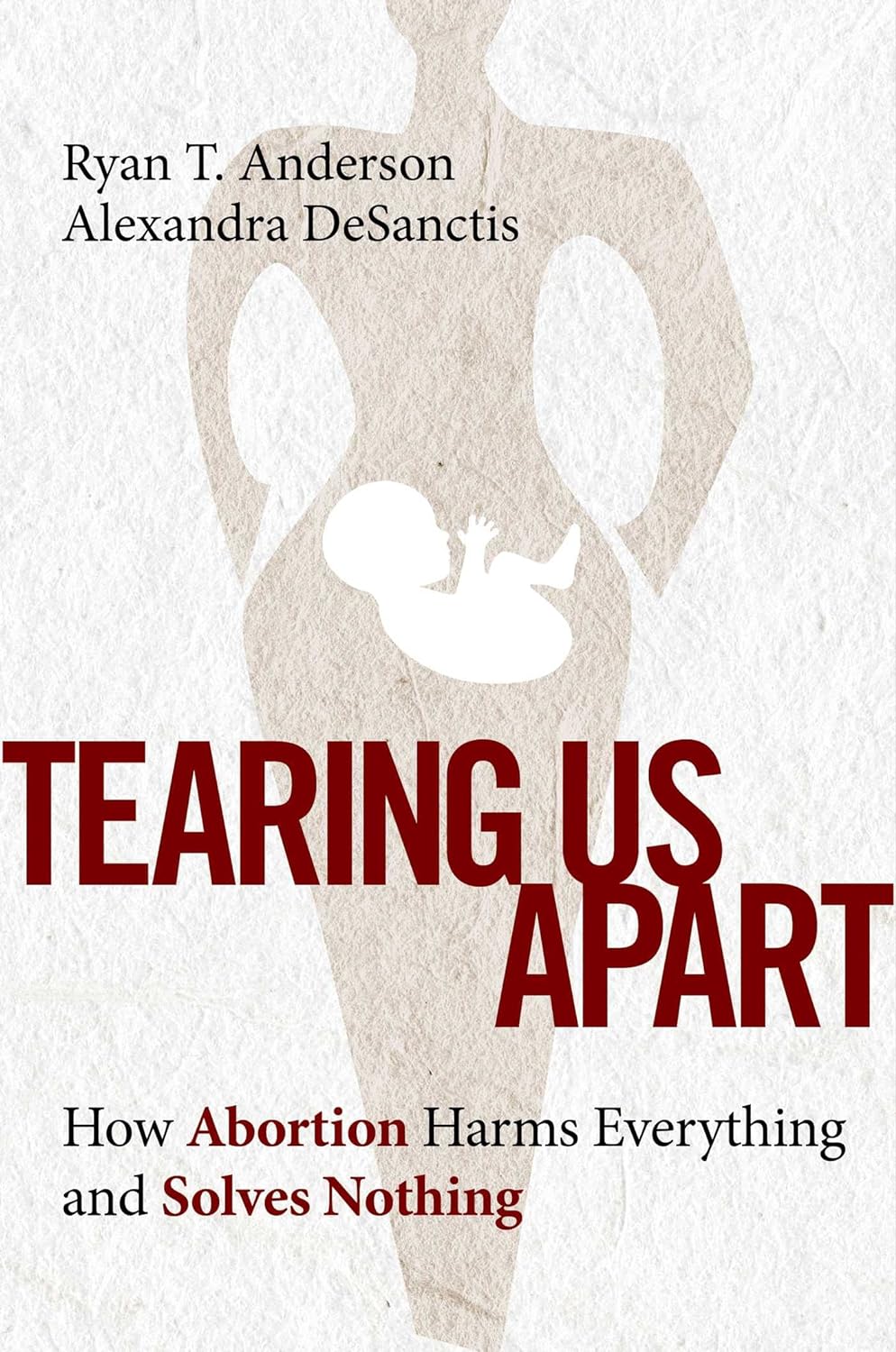
Ryan T. Anderson and Alexandra DeSanctis
Reviewed by: Carl R. Trueman
Tearing Us Apart: How Abortion Harms Everything and Solves Nothing, by Ryan T. Anderson and Alexandra DeSanctis. Regnery, 2022. Hardcover, 256 pages, $18.71. Reviewed by OP minister and professor Carl R. Trueman.
The fall of Roe has proved revelatory on a number of fronts. It has exposed the pathological commitment of many feminists and Democrats to infanticide. It has demonstrated that many of those who thought Donald Trump’s boorishness was the moral issue of our generation still cannot acknowledge that he did anything worthy of praise. Perhaps most surprising, it has revealed how many on both sides of the abortion debate have not thought that deeply about the real issues involved. In part, this latter point is understandable. While abortion was a constitutional right, there seemed little reason to wrestle with the issue in depth. One could be pro-life or pro-choice, but in practice this did not affect most individuals’ engagement in the wider life of the nation. That is no longer the case.
In this context, Christians need to think more deeply about the issue. And that is why Anderson and DeSanctis’s Tearing Us Apart is so valuable. In seven chapters, the book covers the damaging effect of abortion on unborn children, women and family life, equality and choice, medicine, the rule of law, politics and democracy, and media and popular culture. It is a thorough primer on the problems of a culture bent on paying the mortgage on the myth of cost-free sex by killing the most vulnerable members of society.
One argument that has surfaced recently, even in pro-life Christian circles, is that the fall of Roe is not a cause for rejoicing because the problem of abortion can only be solved by changing hearts—not by changing laws. It is odd that this kind of argument is only ever applied to laws that profane progressive pieties. Further, this reasoning fails to acknowledge that laws do not stand in isolation from a society’s moral imagination but are actually constituent parts of its transformation. There is little doubt that Brown v. Board of Education helped to shift American thinking on segregation, as Obergefell v. Hodges has with thinking on gay marriage. We should pray that Dobbs does the same on abortion.
Three chapters stand out. First, the chapter on how abortion harms equality and choice details the murky origins of our abortion culture in the eugenics movement of the twentieth century. It also highlights how abortion has disproportionately targeted babies that are female or disabled or from ethnic minorities. No, Iceland has not eliminated Down’s syndrome. It has eliminated people—real people—with Down’s. That is an important, and rather chilling, distinction.
Second, there is the chapter on how abortion harms medicine. The culture of abortion thrives in, and reinforces, a medical culture of therapy, not true healing. It’s related to the rising acceptance of euthanasia. It is also connected to transgenderism: Planned Parenthood now operates over two hundred centers offering trans hormone therapy. This makes perfect sense as abortion is predicated on personal autonomy and wages war against the perceived tyranny of biology.
Third, the chapter on politics gives a fascinating account of the evolution of the Democratic party on the issue. As left-wing pro-life advocate Nat Hentoff commented many years ago, it is perverse for the party of the underdog to be so committed to killing society’s most vulnerable, but that is where we are.
Will the book persuade any pro-abortionists to change their position? In terms of its underlying argument, probably not. But people also think intuitively, and intuitions are not primarily shaped by facts or even by self-conscious philosophical frameworks but by stories. That is why the minuscule number of abortions sought by victims of rape and incest has become the dominant storyline of the pro-abortion lobby. We too need stories to make the facts and framework of the pro-life cause come alive in the imaginations of the people who will be casting votes on this issue in the next few years. This book provides them.
April 21, 2024
5 Puritan Women: Portraits of Faith and Love
April 14, 2024
How to Read and Understand the Psalms
April 07, 2024
March 31, 2024
My Grandmother Is Praying for Me
March 24, 2024
March 17, 2024
Safeguards: Shielding Our Homes and Equipping Our Kids
March 10, 2024
© 2024 The Orthodox Presbyterian Church